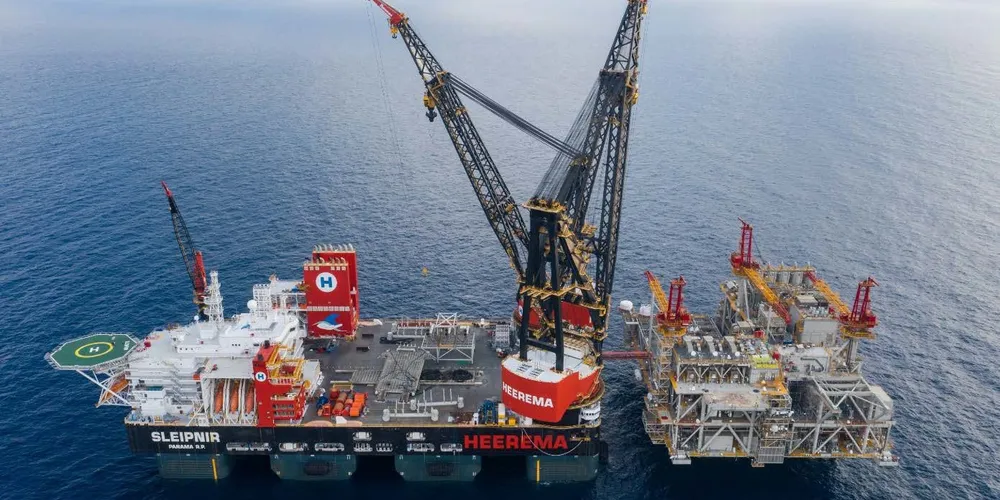Heavy-lift leader Heerema thrives on offshore wind opportunity
Heerema Marine Contractor, a giant in the world of offshore oil and gas T&I, sees offshore wind as an important part of its future

Dutch companies have led the offshore transportation and installation (T&I) market in oil and gas for many years and Heerema Marine Contractors, which was arguably the pioneer, is now making its mark on the offshore wind market.
In the early 1970s, when the North Sea oil and gas arena was in its infancy, Heerema came up with the idea of placing big cranes on large semi-submersible veessels, and proved the concept by building the pioneering sister vessels Balder and Hermod.
In 2013, Hereema added the Aegir to its fleet, and in 2019 the mighty semi-submersible crane vessel Sleipnir was delivered.
Offshore wind move
Heerema remains a leading contractor in the oil and gas sector, but has reshuffled its portfolio, in recent years.
A 2018 decision to exit the offshore pipelay market coincided with a deliberate move into offshore wind.
Moving into wind meant scrapping the pipelay towers on the vessels Balder and Aegir, and then investing in new equipment on the Thialf, such as a motion compensated gripper frame and the giant T-NMS 10000 system for containing internal noise emissions on monopiles, says the company's chief commercial officer, Jeroen van Oosten.
From mid-2021, the company's offshore wind activities picked up, and this sector now constitutes about 50% of the company’s business.
One of the key differences between a large offshore wind project and a major oil and gas development is the high number of installations and the time required. A large oil and gas platform might be installed in just 15 days, but installation of a wind farm can take an entire season, van Oosten notes.
Heerema is currently executing large workscopes on Equinor’s Empire Wind project offshore New York, US, and Orsted’s Greater Changhua offshore wind farm project in Taiwan.
Van Oosten says Heerema also has a big workscope for TenneT grid facilities for offshore wind now being installed along the Dutch and German coasts.
The Sleipnir recently installed the 4000-tonne topsides for TenneT’s Hollandse Kust (west Beta) offshore substation, having last year installed the jacket using the Sleipnir.
For the TenneT projects, Heerema is currently building a new flat-deck barge for floatover installations. It will be named the H-731, and is the only planned fleet addition the company is contemplating at present although there is a lot of vessel equipment being purchased for wind projects.
Van Oosten says it is difficult to invest in fleet additions while the offshore wind market is quite volatile.
“It looks like there's a huge wave of work coming and that may well be true, but it depends on the ambitions of countries and companies, and the amount of subsidies they're willing to provide, the project finance, many factors.
"You need stability before you can say, OK, let’s invest in a new asset."
He says the company’s order book in offshore wind is healthy, and there is a lot of room to grow, but Heerema is very selective about which clients and projects to work with.
“Offshore wind is way more volatile. Even with a contract in place, all kinds of things can happen for it to fall away or not to work out. That is why we have been quite cautious in what we take on, especially in terms of risk profile.”
Having a good balance between oil and gas work, and offshore wind, is important.
“There’s a global energy transition under way, but it's also a transition for us from moving from oil and gas into wind. We’re not alone, there are other major contractors having the same situation, finding the right mix of wind and oil and gas.”
Heerema’s main competitors in wind are Deme, Van Oord, Jan de Nul, Boskalis, Allseas, Saipem and Seaway 7.